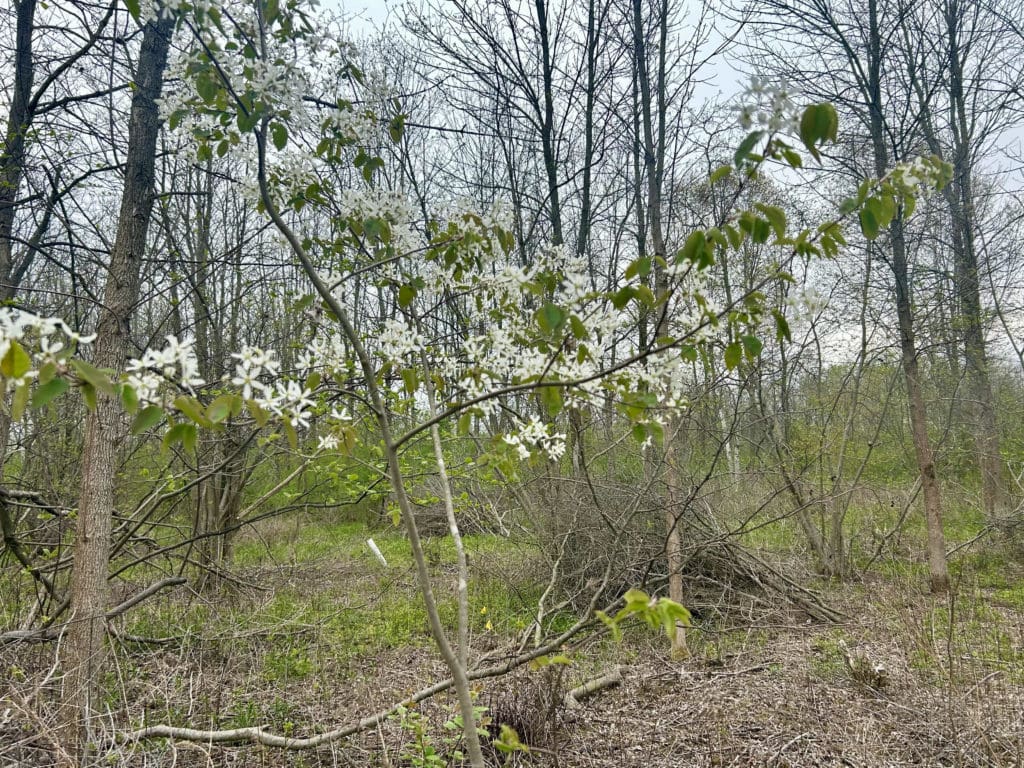By Max Kornetzke, land manager
During the winter months of 2024, I worked on clearing a large thicket of invasive glossy buckthorn along our Willow Trail. The previous summer, I had the help of a few interns, and we mowed back the rapid regrowth with brush cutters. A month later, it had bounced back once again to be at the perfect height and the perfect time of year for treating with a broadleaf selective herbicide. A broadleaf selective herbicide has the added benefit of protecting the native grasses and sedges present on the site.

With full sun hitting the ground, most of the seed bank germinated. It was nearly 100% covered with glossy buckthorn seedlings. I was horrified. I spent many long hours in some of the worst mosquito swarms I’ve ever experienced treating this small half-acre area, but I was driven to make a big impact along one of our most used trails.
This spring, with the great wave of greenery inbound, the site looks very different. No large invasive remains, only some small resprouts, some of which are easy enough to pull out by hand. There are some young black cherry trees and a few large flowering serviceberries that look particularly beautiful right now. Some small patches of invasive seedlings remain, but nothing so seemingly unmanageable as last year.
Of course, it’s not over. I will continue to monitor the area and treat the remaining invasives I encounter this summer. This fall I plan to seed the site with a mix of local ecotype wildflowers, sedges, and grasses. Though it is a small area, this project makes me hopeful that even the worst sites can be transformed.
photo of serviceberry blossoms near buckthorn brush pile by Max Kornetzke
